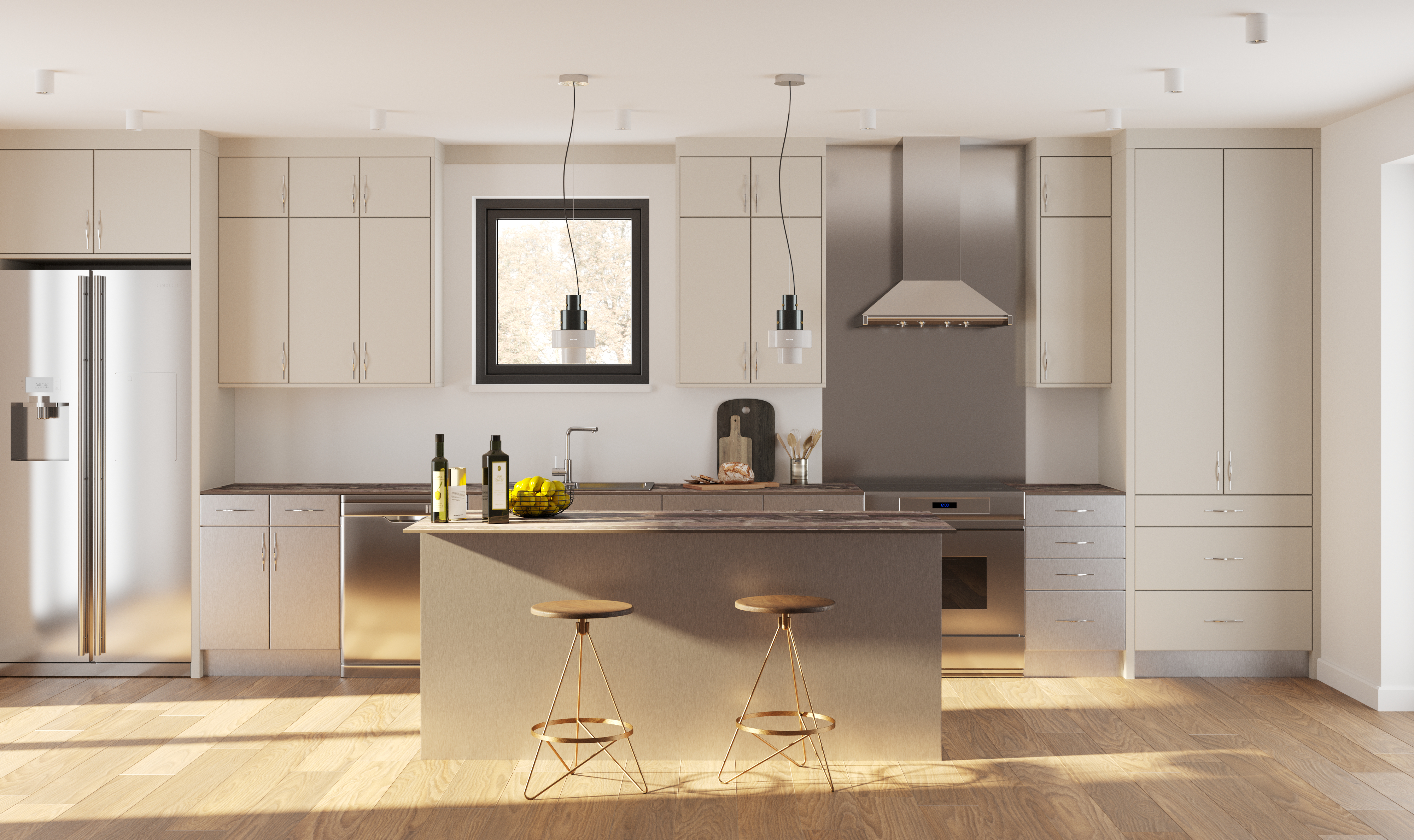
How to Mix and Match Metals in the Kitchen
How to Mix and Match Metals in the Kitchen
For a long time, there was one very simple rule to follow regarding metals in the kitchen: they had to match. From your appliances to drawer pulls and even lighting fixtures, the expectation was to keep the type and finish consistent. Today, while there’s something to be said for using the same metals to create a streamlined look, mixing metals in the kitchen is no longer frowned upon.
Why mix metals in the kitchen?
Having some fun with how you use metals in your kitchen design is a great way to add depth and personality to your space. Using the same finish in every element of your kitchen tends to create a showroom effect — pristine and uniform across the board. And, while many homeowners appreciate this level of consistency, there are others who may want to go against the grain to make their kitchen completely unique. Furthermore, mixing metals can create a timeless aesthetic; as certain metal types and finishes fade from popularity, the others will keep the entire look fresh for years to come.
What metals are we talking about?
When it comes to mixing metals in the kitchen, there are a number of different places to look. Some examples include:
- Large appliances, such as your fridge, stove, and dishwasher
- Cabinet handles and drawer pulls
- Light fixtures
- Sinks and faucets
- Small appliances such as mixers and espresso machines
- Furniture and decor
- Utensils and cookware, especially if it’s stored out in the open

Mixing metal finishes in the kitchen: how to do it right
Mixing your metals doesn’t mean your kitchen will end up looking like a patchwork quilt. With a few thoughtful design choices, you can incorporate your favourite metals into your space without sacrificing style.
- Coordinate your metals with other non-metal elements: Your metals may not match, but you want to make sure that they complement the rest of the finishes in your kitchen. When choosing your metals, consider not only how they’ll work together, but how they’ll work with your walls, floors, countertops, cabinetry, and furniture as well.
- Don’t go overboard: It is possible to have too much of a good thing. When you’re mixing your metals, balance is key. If you try to work in too many different types and finishes, you run the risk of ending up with something that looks more like a messy afterthought rather than a carefully curated kitchen space. The general best practice is to stick with three metals overall.
- Work from a cool primary base: Cool metals such as stainless steel, chrome, nickel, pewter, and gunmetal tend to be easier to complement , so lean on them for the larger metal elements in your kitchen.
- Accent with warmer tones: A warm metal is something like a copper, brass, bronze, or yellow gold. Warm metallic elements can be used to add character and a pop to your overall design.
- Consistency is key: This final piece of advice may seem counterintuitive, but it’s the key to tying your kitchen together. When mixing metals, stay consistent in how you disperse the metals throughout your space: mix between elements (i.e. drawers vs. appliances) but always ensure your sets of metal elements match.
When it comes to your home, the kitchen is where you will spend most of your time. Mixing metals into your design is one of the easiest ways to ensure that central space reflects who you are, while also making sure it stands the test of time.
Try out our custom kitchen design tool with our Reflections Collection to mix metals into your own kitchen design!